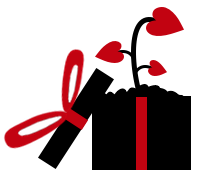Brishkay Ahmed: Unveiling the History of the Burqa
 Brishkay Ahmed, center, is the filmmaker behind the documentary, Story of Burqa: Case of a Confused Afghan. (“Burqas and the Confused Afghan,” Photo: Meghan Mcadam)
Brishkay Ahmed, center, is the filmmaker behind the documentary, Story of Burqa: Case of a Confused Afghan. (“Burqas and the Confused Afghan,” Photo: Meghan Mcadam)
A true understanding of the burqa and its history is critical. — Brishkay Ahmed
BY BUREEN RUFFIN| THE BURQA ISSUE | WINTER 2015|2016
Across the globe the burqa is ubiquitous: in the markets of Kabul, on the streets of New York City, on the runways of Givenchy, and in pop music videos. It is increasingly at the center of heated debates in the East and West, but little is known about the burqa’s origin and history, particularly in the West. Canada was recently the latest in a number of countries embroiled in a battle to restrict or ban the controversial garment.
In her documentary film Story of Burqa: Case of a Confused Afghan, Brishkay Ahmed, an Afghan-Canadian filmmaker, takes on the enormous task of uncovering the story of how the burqa came to be associated with Afghanistan and its role in the lives of Afghan women and girls.
Ahmed and her camera crew take the viewer on a journey through the alleyways and past the stalls of the Kabul markets, where burqas are made, sold, and worn. By her own admission, Ahmed’s Dari (a dialect of Persian spoken in Afghanistan) is poor; still, she unflinchingly interrogates her sources — shoppers, tailors, politicians, women, and intellectuals — for answers.
The result is a film that gives voice to a more nuanced and complex narrative that, at the very least, belies popular perceptions of the burqa.
[youtube width=”600″ height=”415″]https://youtu.be/ebnTRBEiM0A[/youtube]
Trailer of Story of Burqa: Case of a Confused Afghan (Brishkay Ahmed, Canada, 2012, 70 mins). View the entire film at Culture Unplugged.
I recently spoke with Ahmed over Skype about her documentary film, which premiered at the 2012 DOXA Documentary Film Festival in Vancouver. The film, she says, has sparked honest dialogue about the burqa. For the filmmaker, who recently took to social media to dispel inaccuracies about the burqa when the debates hit close to home in Canada, the value of frank discussions on this issue has never been more vital.
Ahmed is happy the documentary continues to reach diverse audiences in Canada and the U.S., but she hopes to show it to men and women inside Afghanistan and other Islamic nations.
What follows is our discussion about filmmaking, activism, and women.
Q: How did you come to be a filmmaker and did you study film knowing you were interested in pursuing this work?
A: I was interested in journalism at first but realized I wanted to do more than the one-minute story. I wanted to go deeper. It’s important to make people think. Books and news articles certainly make us think and that’s very important, but if you want social change, you have to make people care. You have to make them feel. And film does that for me.
As a woman from Afghanistan, having lived in both the East and the West, and the mother of two girls, women’s issues are important to me. But I did not consider making a film about the burqa until I was married and living in Iran and had to veil myself. It triggered something. I guess I thought there was a certain level of what was acceptable.
Sometimes we can be blind to things. We say, ‘Oh that’s okay because they live in that part of the world.’ In Iran, I saw a young girl, maybe 18 or 19 years old, dragged into a police car by two officers — one, a woman in full chador (full body cloak commonly worn by women in Iran) — because her scarf was not worn properly. It angered me.
Suddenly, I realized: this is what I care about. I’m going to use film, and I need to go to Afghanistan. A lot of activism — even art, in general, comes from a place of anger. For me, it’s certainly rooted there.
Q: The film opens with a scene on a busy Vancouver street. You are dressing a woman in a burqa. The scene ends with an interesting interaction with two Afghan men, who, after observing the scene, share an anecdote about a woman who was dragged by a bus because her burqa was caught in the door. Why did you choose to begin the film that way?
A: Having been in Iran and seeing incidents like the one with the young girl, I wanted to see how people would react if they actually saw a burqa on the street. Would they be curious? Would they ignore it? In the West we are socialized to be politically correct and in doing so we, at times, confuse what we think is culture with oppression.
I asked my friend to walk across the street wearing the burqa. Coincidentally, Afghan men were having coffee at the Starbucks nearby. The conversation with them brought a kind of seriousness to the experiment.
Q: The following scene is animated and features a woman with a birdcage on her head, which, without giving too much away, we return to at the end of the film. Why did you use animation in the film?
A: The animation is important to me because I want young girls to be interested. I want to reach beyond the intellectual audience who knows documentary film or who understands the broader issues. This is an important subject and should reach a diverse audience; educated and uneducated, young and old.
But I do believe that the power to change that kind of oppression is the responsibility of women. It’s up to us to make sure we shut that cage door and aren’t shoved back in.
Q: The subtitle of your film is “Case of a Confused Afghan.” What questions did you hope the film would answer?
A: Most importantly, I wanted to show that the burqa isn’t Islamic, and secondly, that it’s a powerful political tool. When a woman wears a headscarf, she’s not limited. She can be a judge, a member of parliament, or a homemaker if she so chooses.
When her face and hands are covered and she’s wearing a double layer and can barely hear anything, she is rendered invisible.
A true understanding of the burqa and its history is critical. A great number of people in the world have accepted the fact that the hands and faces of their daughters, sisters, and mothers should be covered. In some cases women are not allowed to leave their homes. [Referring to the recent controversy in Canada] I have no problem with a woman taking her oath with her face covered, if it is indeed her personal choice.
When I stayed in a women’s shelter in Afghanistan, I never met a woman, there or in Kabul, generally, who said they liked the burqa. At any opportunity, they all took it off. In the garden, the moment the male gardener left, they all lifted their veils to enjoy the sun.
Q: As a Westerner, I appreciate that the film makes clear the distinctions between the hijab and burqa and exposes the complicated historical and political journey of the burqa in Afghanistan. Tell me about filming in Kabul and the people you chose to interview.
A: I chose to film in Kabul because it was accessible — in terms of going in with a camera crew — but also in terms of access to the intellectuals, the powerful men I wanted to interview. I couldn’t have women telling men the burqa is not Islamic. That wouldn’t work. I needed men. I wanted Afghan people to see men they respect. Men they see on TV. Men they discuss in the Jirgas (assembly of elders). Afghan men listen to men. They are influenced by men. There is a saying in my country: You are a fool if you listen to a woman.
Q: The film answered a lot of questions but also raised many, which is good. I think art should make us question what we believe. Is there a question the film didn’t answer for you? Would you do anything differently if you were to do it again?
A: I was a bit of a coward because I didn’t try hard enough to talk to more women who wore the burqa. The men refused permission, but my instinct was to keep the camera rolling and ask the women directly. I wanted them to lift their veils and talk to me, but I was politically correct. I didn’t want to offend. I didn’t want to get them in trouble with their husbands. I wish I had been braver.
♦

BUREEN RUFFIN
Bureen Ruffin was born in New York City to Haitian parents. She holds an MFA in Creative Writing and an MA in Liberal Studies from the New School and teaches writing at Pace University. She is currently working on a memoir and occasionally tweets @lepetittoutou.
OF NOTE Magazine is free to readers, free of advertising, and free of subscriptions—all made possible by generous supporters like you. Your tax tax-deductible gift will help us continue to feature innovative and emerging global artists using the arts as tools for social change.
OF NOTE Magazine is a fiscally sponsored organization of the New York Foundation for the Arts, a 501 (c) (3), tax-exempt organization. All donations are 100% tax-deductible to the full extent of the law.




